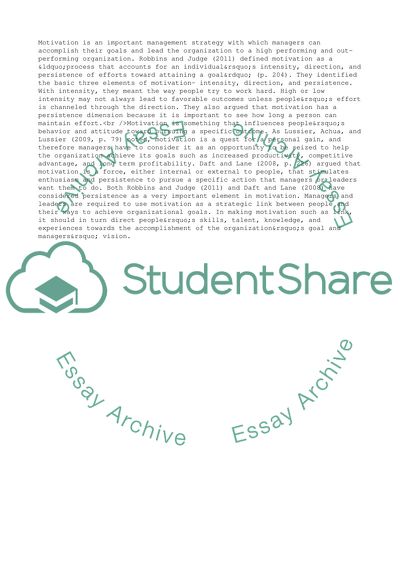Cite this document
(Management's Strategy is Motivation Essay Example | Topics and Well Written Essays - 2000 words - 6, n.d.)
Management's Strategy is Motivation Essay Example | Topics and Well Written Essays - 2000 words - 6. https://studentshare.org/management/1790544-motivation
Management's Strategy is Motivation Essay Example | Topics and Well Written Essays - 2000 words - 6. https://studentshare.org/management/1790544-motivation
(Management'S Strategy Is Motivation Essay Example | Topics and Well Written Essays - 2000 Words - 6)
Management'S Strategy Is Motivation Essay Example | Topics and Well Written Essays - 2000 Words - 6. https://studentshare.org/management/1790544-motivation.
Management'S Strategy Is Motivation Essay Example | Topics and Well Written Essays - 2000 Words - 6. https://studentshare.org/management/1790544-motivation.
“Management'S Strategy Is Motivation Essay Example | Topics and Well Written Essays - 2000 Words - 6”. https://studentshare.org/management/1790544-motivation.


